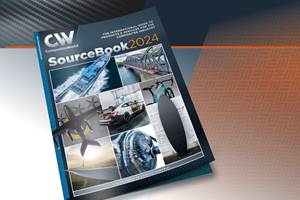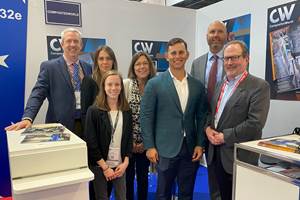If autocomposites were easy, it would have been done already
I was asked to moderate a five-person panel that took place on the last day of the 2007 SPE Automotive Composites Conference and Exhibition (ACCE) in Troy, Mich.: “How to market the value of composites.”
I was asked to moderate a five-person panel that took place on the last day of the 2007 SPE Automotive Composites Conference and Exhibition (ACCE) in Troy, Mich. (See CT’s coverage of this event on p. 20.) Panelists were confronted with one simple topic: “How to market the value of composites.” And because this was an automotive composites conference, implicit in the theme was the assumption that we were to talk about marketing composites to automotive OEMs. It’s a simple topic, but there are no easy answers.
The panel included David Dyke, advanced engineering manager, Meridian Automotive Systems; Harry J., Couch, technical advisor, National Composites Center; Bill Mills, marketing director — Global Automotive, AZDEL Inc.; Len Nunnery, VP of global sales and marketing, Bulk Molding Compounds Inc.; and Ticona Engineering Polymers vice president Roeland Polet. I thank each of them for their time and contribution to the panel.
The question of marketing value to automotive OEMs is a somewhat loaded one and implies that maybe the automotive industry has yet to integrate composites as much as it could or should, particularly in light of dwindling natural resources, rising fuel prices, and booming new-vehicle demand in developing countries, such as China and India. Yet, looking back over the last 10 to 15 years, as some of the panelists did, one can make a strong case for the idea that the automotive industry already has embraced composites in applications that might have been difficult to forecast in the early 1990s. And it’s true that composites are now very ably serving millions of drivers around the world, and doing so in ways metallurgists can only dream of. These applications, however, tend for the most part to be outside the realm of the “big stuff” — the chassis and body panels and substructural elements that, despite notable exceptions, still belong to steel and aluminum.
Several on the panel pointed out that “selling” composites to the auto industry has been and remains an incremental, long-term, strategic process that requires patience to help automotive engineers to stop thinking only of steel and start thinking also of fibers and resin. And if you throw in the institutional barriers to entry in the auto industry — organized labor, legacy facilities and processes devoted to metal stamping, overall resistance to change — it’s almost a wonder that composites have made the inroads they have.
Looming in the background of this discussion was, oddly, Boeing’s 787. The auto industry has, in Boeing, an exemplary instance of a massive American business literally built on aluminum that has bet the farm on composites, embracing carbon fiber like no company ever has. And if a firm like Boeing can manage the paradigm shift, could the auto industry also make the leap?
Yes and no, said the panel. The financial paradigms of the automotive industry are very different from aerospace, which changes the rules for composites, but the stakes facing the automotive industry are no less critical, which requires substantial (dare I say it?) out-of-the-box thinking.
It was suggested by the panel that true integration of composites into automotive design requires not the part-by-part nibbling of the last 20 years, but a wholesale rethinking of car design, starting from the ground up.
The question is, who will do that heavy lifting? Automotive OEMs, like it or not, don’t seem sufficiently motivated, which led at least one panelist to suggest that it’s up to the composites industry — form a consortium that will rethink and remake the automobile with composites as a primary material. It’s a radical (and expensive) notion, but these are radical (and expensive) times. And maybe it’s the wakeup call the auto industry needs to make a Boeing-like transformation. Anyone interested?
Related Content
Welcome to the Composites Age
The human race has a long history of developing materials, each one a little better than the one before it. Composites are among the latest in a long line, and proving highly adaptable to new opportunities.
Read MoreCompositesWorld SourceBook 2024
Welcome to CW’s annual SourceBook, your guide to suppliers of machinery, materials, software and other services for the composites industry.
Read MoreThe return of trade show season
SAMPE Seattle, JEC World and the Paris Air Show are approaching fast, and they signal the real emergence of a post-pandemic world.
Read MoreWhat to make of the first JEC World in three years
CW went to JEC World 2022 not sure what to expect. We were pleasantly surprised, and learned much about where and how new composites technologies are being developed.
Read MoreRead Next
Composites end markets: Energy (2024)
Composites are used widely in oil/gas, wind and other renewable energy applications. Despite market challenges, growth potential and innovation for composites continue.
Read MoreFrom the CW Archives: The tale of the thermoplastic cryotank
In 2006, guest columnist Bob Hartunian related the story of his efforts two decades prior, while at McDonnell Douglas, to develop a thermoplastic composite crytank for hydrogen storage. He learned a lot of lessons.
Read MoreCW’s 2024 Top Shops survey offers new approach to benchmarking
Respondents that complete the survey by April 30, 2024, have the chance to be recognized as an honoree.
Read More

















.jpg;maxWidth=300;quality=90)








